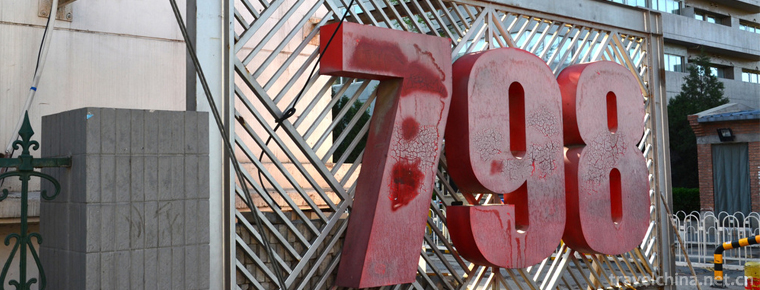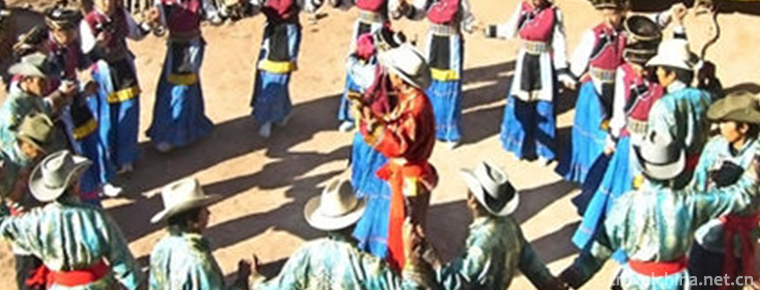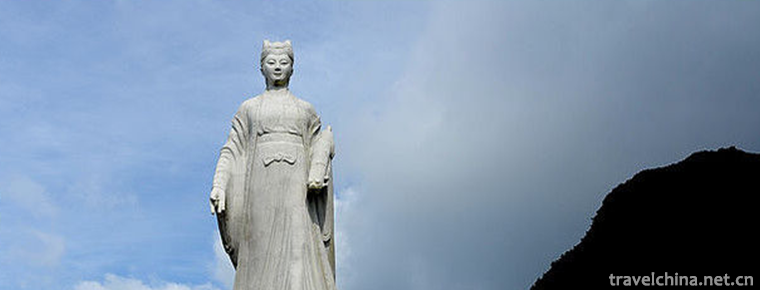China University Of Geosciences
China University Of Geosciences
China University of Geosciences is known as "Da Da". Ministry of Education of the People's Republic of China Directly under National Key Universities It's the state. 211 Project "," 985 engineering advantage discipline innovation platform The key is to build universities. World class discipline construction universities It is approved by the state. Graduate School Universities, selected countries " 111 plan " Excellent engineer education and training plan , National construction of high level university postgraduate projects , Chinese government scholarship to receive international students in China , The first batch of scientific and technological achievements transformation and technology transfer bases in Colleges and Universities , High quality industry sharing high quality resources Alliance , International Union of Geosciences , China University Planetary Science Alliance " Seven schools jointly run schools "Important members. The school takes the earth science as the main feature, covering the categories of science, engineering, literature, management, economics, law, education, art and so on, and is known as "the highest institution of Chinese earth science".
China University of Geosciences was founded in 1952. Peking University , Tsinghua University , Tianjin University , Tangshan Railway Institute Such departments as geology, engineering and other departments are merged and formed. Beijing Institute of Geology In 1960, it was designated by the central government as a key university in China. Migration during the cultural revolution. In 1975, it moved to Wuhan as a whole and renamed it. Wuhan Institute of Geology In 1987, the State Education Commission approved the Wuhan Institute of geology to be renamed China University of Geosciences, running in Wuhan and Beijing, with its headquarters in Wuhan. 2000, enter Universities directly under the Ministry of Education Sequence. In 2006, the Ministry of education, the original Ministry of land and resources Signing the agreement to build China University of Geosciences.
As of October 2018, the school covers an area of 1421758 square meters, and the school area is 815074.58 square meters. It has 19 colleges and 65 undergraduate specialties, 16 first level disciplines, Ph.D., 33 first level master's degree, 13 postdoctoral research stations, 10 kinds of professional degree conferring power, among which the engineering master's degree includes 14 engineering fields, 3122 teaching staff, and full-time school students 26103.
Historical evolution
Initial stage of school establishment
After the founding of new China, in order to adapt to the needs of large-scale socialist construction, in 1952, the central government carried out the adjustment of departments nationwide in line with the principle of "developing specialized colleges and universities, focusing on training industrial construction talents and teachers, and rectifying and strengthening comprehensive universities". Peking University Department of Geology Tsinghua University Department of Geology Tianjin University (formerly Beiyang University Geological engineering department and Southwest Jiao Tong University (formerly Tangshan Railway Institute Mining Department geology section and Northwestern University The Department of geology merged and established the predecessor of China University of Geosciences. Beijing Institute of Geology
In November 1, 1952, the first opening ceremony of the Beijing Institute of geology was held at the junction of Wangfu in Beijing.
Li, Li Siguang, a famous Chinese geologist and Minister of geology, said in his speech: "now, new China has launched a great undertaking. Beijing Institute of Aeronautics It is amazing that the Beijing Institute of geology is a place of action. You are the warriors moving. You are the new land grandfather, mother-in-law, and I congratulate you on behalf of the Ministry of geology. The support of leaders and the expectations of our predecessors make our students more loving to the geological cause. The school decided November 7th to be the "anniversary day" of the Beijing Institute of geology.
In May 17, 1957, comrade Liu Shaoji met with representatives of college graduates in Zhongnanhai, and held a cordial conversation for more than 3 hours. He said: geologists are "guerrillas in the construction period". If we want to build geological prospecting, we must fight guerrilla warfare. You are guerrillas, scouts and vanguards in the construction period.
In 1960, the school was appraised as the "red flag Academy of Beijing's cultural and educational front" and ranked among the 64 institutes established by the State Council. National Key Universities List.
In August 1968, the CPC Central Committee and the State Council issued the notice on the dispatch of the workers to the school. In August 25th, the workers and PLA propaganda teams entered the Beijing Institute of geology. They took over all the work of the school, carried out the so-called "fighting, batting and changing", such as the great criticism, the great alliance, the establishment of the Revolutionary Committee, the liquidation of class ranks and the consolidation of the party.
Since November 15, 1969, more than 1000 faculty members have brought home their families and children and sent them to the "57" Cadre School of the Jiang Renhe commune, Xixia.
In the 5 years from 1966 to 1970, schools ceased enrollment. The reverse action of the gang of four has caused a great calamity in the cause of higher education.
In 1970, 13 of the 46 colleges and universities in Beijing were forced to move out of the country. Among them, geological and agricultural and forestry universities were the main ones. Schools were one of the victimized schools, making schools even worse.
Since then, the school has entered a turbulent and displaced state. In hasty relocation, instruments, books, materials, specimens, teaching documents and other losses were heavy, and the staff and workers lost their stable position. The beautiful campus was encroached upon and encroached upon.
Reconstruction and revitalization
Relocation of Hubei
In 1970, the school moved outward. The school sent people to Shaanxi, Jiangxi, Gansu, Hunan, Hubei and other places respectively to investigate the site.
In May 1970, the General Administration of Geology and geology approved that the Beijing Institute of geology moved to Shimenn County, Hunan. In view of the hasty decision, in September 18th, the approval of the national geological administration on the relocation of the Beijing Institute of geology to the capital construction of Jiangling, Hubei, agreed that the plan to move to Shimenn County in Hunan would be relocated to Hubei. Jiangling County The school was renamed the Hubei Institute of geology.
In 1975, it moved to Wuhan, capital of Hubei Province, and was renamed Wuhan Institute of geology.
In 1978, the Wuhan Institute of geology established the Beijing Graduate School of Wuhan Geological Institute at the old site of Beijing.
In November 1981, with the approval of the State Council, the school became the first batch of doctors and master's degree conferring units in the country.
In 1987, the State Education Commission approved the Wuhan Institute of geology to be renamed China University of Geosciences, Wuhan and Beijing, and its headquarters is in Wuhan.
In December 6, 1997, the National Planning Commission agreed with China University of Geosciences's "246l project" on the feasibility study report of the "211 Project" construction project of China University of Geosciences. 211 Project "The construction project is formally established, and its construction plan is determined.
In February 2000, the school was assigned by the Ministry of land and resources. Ministry of Education Management, school entry Universities directly under the Ministry of Education Sequence.
In October 2006, the Ministry of education, Ministry of land and resources Signing the agreement to build China University of Geosciences. In the same year, the "advantage discipline innovation platform" declared by the school was approved by the Ministry of education and the Ministry of finance. China University of Geosciences officially became a national " 985 engineering advantage discipline innovation platform Part of the building.
In 2016, China University of Geosciences (Wuhan) ocean college was officially opened.
In September 2017, China University of Geosciences was elected to the state. "Double First-Class" initiative "World-class discipline construction of colleges and universities.
In September 29, 2018, Chongqing Municipal People's Government A strategic cooperation agreement was signed with 6 universities such as China University of Geosciences (Wuhan).
In February 2019, schools were recognized by the Ministry of education as the first batch of universities to transform scientific and technological achievements and technology transfer bases. In July, the first group was selected for China University Planetary Science Alliance. In August, the Ministry of education was awarded the national experience of innovation and entrepreneurship.
academic research
Achievements in scientific research
The "973" project and topic sponsored by China University of Geosciences (Wuhan), "863" project, and National Natural Science Foundation of China. National Social Science Fund There are more than 600 national projects and so on. The achievements made by academician Yin Hongfu to determine the global Permian Triassic boundary type "golden nail" (International Standard) were awarded the honor of "the ten major progress of China's basic research in 2001", "the ten major scientific and technological progress of Chinese universities in 2001" and "the ten major science and technology news of China in 2001".
The teachers and students of the school published 4 papers and 1 Science articles on the international magazine Nature as the first author. In the past 5 years, 50 scientific research achievements have been awarded the provincial and ministerial level scientific and technological awards. Among them, 4 are national science and technology progress awards, 1 are two National Natural Science Awards, and two are national science and technology progress awards. The school sponsored " Earth Science The Chinese version is included in the famous international search system EI. The English version is included in the famous international retrieval system SCIE. The Journal (SOCIAL SCIENCE EDITION) has entered the "core journals of Chinese Core Journals" and CSSCI. Scientific research always faces the main battlefield of national economic construction, serves economic and social development, actively participates in prospecting breakthrough strategic action, guides the development of science and technology in the industry, and trains and delivers technical backbone and managerial personnel. As the only university, the school has participated in the science of mainland China. drilling engineering With the complete qualification of scientific research and production of military projects, 2 research centers for deep space exploration joint research center of the Ministry of education were set up. Chang'e project "Lunar exploration data processing and lunar application research, independently developed MAPGIS software has been successfully applied to" Shenzhou "Series of manned spaceflight search and rescue. The school persists in promoting the cooperation of industry, University and research. Collaborative innovation System construction. After the Wenchuan earthquake in 2008, the school organized a group of experts on science and technology disaster relief to the disaster area in time to provide technical support for disaster prevention, post disaster reconstruction and site selection.
scientific research institution
As of October 2018, there were 86 kinds of research institutes, laboratories, research institutes and institutes, including 2 key state laboratories, 1 National Engineering and technology research centers, 1 scientific and technological cooperation bases for science and technology, and 1 innovative talents training demonstration bases of the Ministry of science and technology. The school has a perfect experimental and practical teaching system. There are 3 state-level experimental teaching demonstration centers and 1 state-level virtual simulation experimental teaching centers.
http://www.cug.edu.cn/
http://www.cugb.edu.cn/index.action




-
798 Art Area
Da Shan Zi area, Jiuxianqiao street, Chaoyang District, Beijing, China.
Views: 860 Time 2018-10-12 -
Maling River Canyon
Maling River Gorge is located in Xingyi City, Guizhou Province. It is an important member of Xingyi National Geopark and a national scenic spot of the People's Republic of China. It is known as ".
Views: 269 Time 2019-02-06 -
Mount Tai Fonters Happy World
Tai'an Fangte Happy World is located in the eastern New Area of Taishan District, Tai'an City, Shandong Province. Font's Happy World is characterized by science fiction and animation.
Views: 366 Time 2019-02-13 -
Browns Folk Songs
The folk songs of the Browns are rich in content and many melodies. Every time they get married, move to a new house, celebrate New Year's Day or work, young people .
Views: 170 Time 2019-04-04 -
Dagudarengrab
Dagudalenglei Biao is the only Creation Epic discovered, sorted out and published by the De'ang people up to now. It is more than 1200 lines long. The epic is different from.
Views: 392 Time 2019-04-22 -
Legend of Filial Women in the East China Sea
The filial woman in the East China Sea is an ancient folklore story. Her real name is Zhou Qing. It comes from Biographies of LieNu and Biographies of Yu Dingguo..
Views: 137 Time 2019-04-27 -
Dulong Kakuwa Festival
Dulong Kakuwa Festival spreads in all Dulong villages in the Dulong River Valley in the west of Gongshan Dulong Nu Autonomous County, Nujiang Lisu Autonomous Prefecture.
Views: 148 Time 2019-04-28 -
Ma Xian Xing custom
The belief in Ma Xian is a traditional folk custom inherited from generation to generation by the people of Fujian and Zhejiang. Ma Xian, also known as Ma Xiaoxian, is a goddess worshipped in northeas.
Views: 383 Time 2019-05-16 -
Bamboo weaving
The traditional bamboo weaving technology has a long history and is rich in the crystallization of the hard work of the working people of the Chinese nation. Bamboo weaving crafts are divided into fin.
Views: 169 Time 2019-08-10 -
Chengdu Technological University
Chengdu Institute of Technology is a public full-time general undergraduate school organized by the People's Government of Sichuan Province. Founded in 1913, the school is the first industrial school .
Views: 285 Time 2019-08-31 -
Ganzi Zanba
"Zanba" is the Tibetan transliteration of fried noodles. It is a staple food that Tibetan people must eat every day. If you are a guest of Tibetan compatriots' homes, the host will bring you fragrant milk tea and highland barley fried noodles, golden butter and milk yellow "Qula" (casein) and sugar stacked on the table..
Views: 84 Time 2020-12-06 -
Suining medical and health
By the end of 2019, there are 3725 medical and health institutions in Suining, including 76 hospitals (63 private hospitals) and 3622 primary medical and health institutions; there are 21400 beds in medical and health institutions and 18200 health technicians.
Views: 381 Time 2020-12-16










